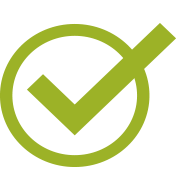Catalog Description
Prerequisite: Completion of FASH 4A with grade of "C" or better
Hours: 108 (27 lecture, 81 laboratory)
Description: Focuses on developing the skills needed to learn alterations and mending clothes. It includes the study of fit analysis of different types of Ready-To-Wear apparel created in standard sizes and learning to make alterations to the apparel to fit different body types. The course will cover the techniques of mending woven and knit fabrics. (CSU)
Course Student Learning Outcomes
- CSLO #1: Develop skills in mending and altering ready to wear clothing.
- CSLO #2: Understand how mending and altering garments contributes to sustainability in the fashion industry.
Effective Term
Fall 2025
Course Type
Credit - Degree-applicable
Contact Hours
108
Outside of Class Hours
54
Total Student Learning Hours
162
Course Objectives
1. Understand and articulate the role of garment repair and alterations in promoting sustainability
2. Demonstrate proficiency in hand-sewing and machine-sewing techniques used for alterations and mending
3. Identify and apply appropriate mending techniques based on garment fabric type
4. Assess and execute common garment alterations to improve fit and wearability in RTW garments
5. Complete repairs and alterations on various types of garments and areas that extend the life of garments while maintaining or improving their appearance
General Education Information
- Approved College Associate Degree GE Applicability
- CSU GE Applicability (Recommended-requires CSU approval)
- Cal-GETC Applicability (Recommended - Requires External Approval)
- IGETC Applicability (Recommended-requires CSU/UC approval)
Articulation Information
- CSU Transferable
Methods of Evaluation
- Projects
- Example: Students will create a portfolio/presentation showcasing before-and-after repairs and alterations. They will be expected to include: summary of experiences with all clothing items mended and altered throughout the term, a comprehensive analysis on results from altering clothes, personal philosophy statements on sustainability and repair, along with a reflection on how learned skills impacted their view on fashion adaptations, sustainability, and consumerism, and potential challenges and opportunities in running a repair and alterations business.
- Skill Demonstrations
- Example: Students will bring their personal garments to class, each will analyze the fit and balance of the garments. Students will then demonstrate skills in altering the garments using hand sewing and machine sewing techniques. Altered garments will be submitted for evaluation on the applied alterations and sewing skills.
Repeatable
No
Methods of Instruction
- Laboratory
- Lecture/Discussion
- Distance Learning
Lab:
- Following a lecture and demonstration, students will create a notebook of hand and machine sewing samples to show understanding of alteration skills. The instructor will assist in the lab to help with the techniques.
Lecture:
- The instructor will give a lecture on aspects of fit on ready to wear clothing. After the lecture the students will discuss personal experiences with garments and fit.
Distance Learning
- The instructor will post a lecture on sustainability and ask in a discussion board, for the students to brainstorm the ways clothing can be altered to extend their use.
Typical Out of Class Assignments
Reading Assignments
Students will read a selection of articles and book excerpts focusing on the themes of sustainability, the practice of mending, and the impact of clothing alterations. After reading, students will complete a short reflection to summarize insights. The reflection will include the key points, new perspectives gained, and summary of the reading.
Writing, Problem Solving or Performance
Students will bring their personal garments to class, each will analyze the fit and balance of the garments. They will take measurements and mark the corrections. Students will complete the sewing independently outside of the class, using hand sewing and machine sewing techniques. Each will document the process and share their write up with their peers. Students will also turn in altered garment for evaluation on their alterations and sewing skills.
Other (Term projects, research papers, portfolios, etc.)
Required Materials
- Clothing Alterations and Repairs
- Author: Chelsey Byrd Lewallen
- Publisher: Bloomsbury
- Publication Date: 3/21/2024
- Text Edition: 1st
- Classic Textbook?: Yes
- OER Link:
- OER:
Other materials and-or supplies required of students that contribute to the cost of the course.
Sewing kits (needles, thread, scissors, measuring tape, marking tools, seam ripper, etc.) Sewing machines and fabric for practice Personal garments for alteration projects. Garments can be purchased at thrift or bargain stores.


